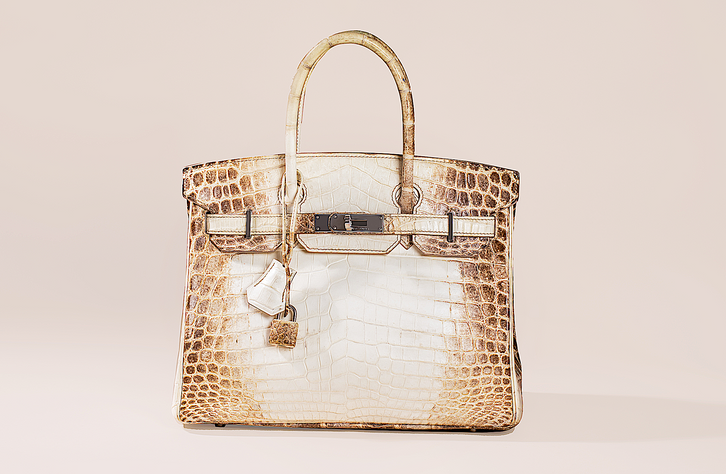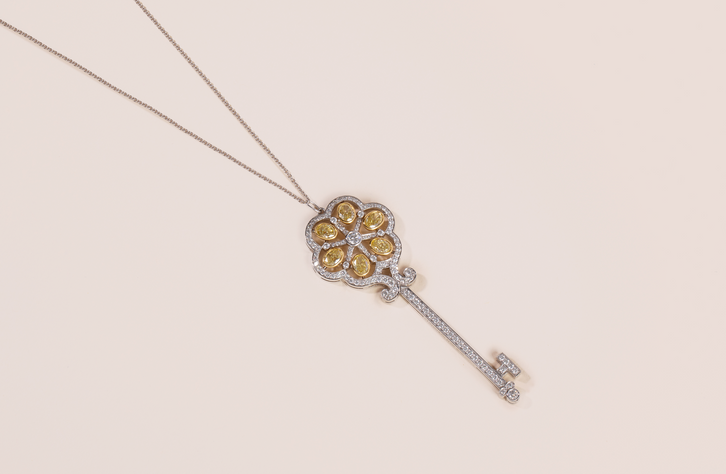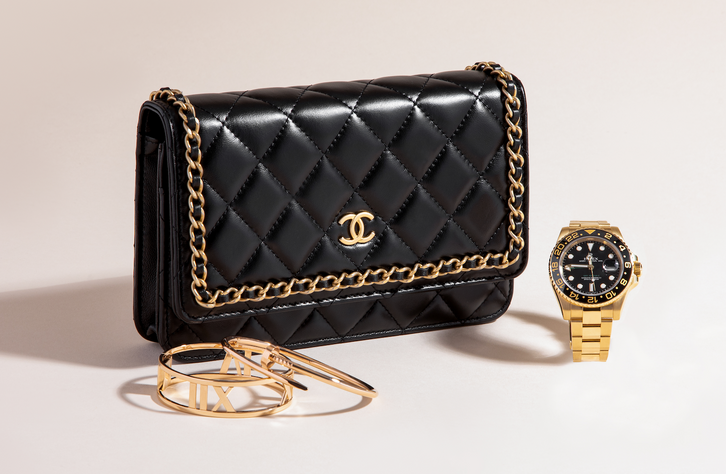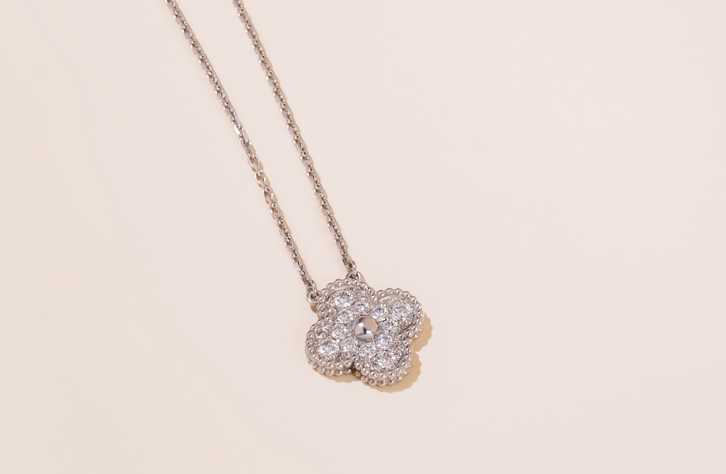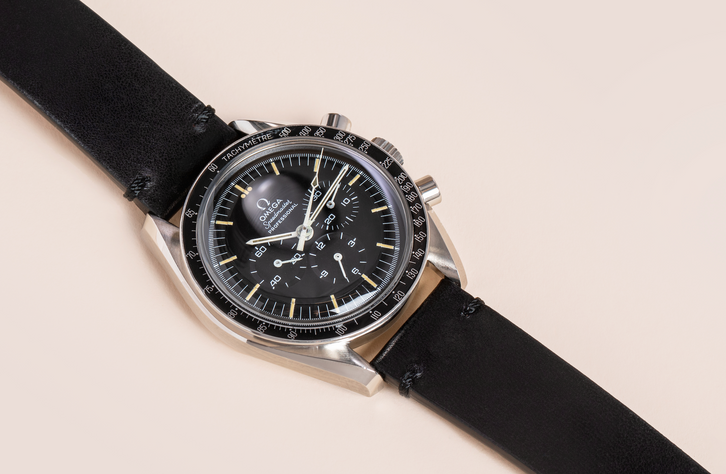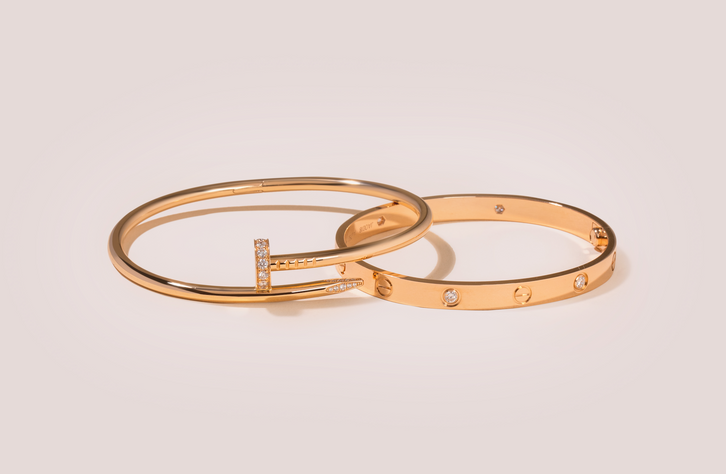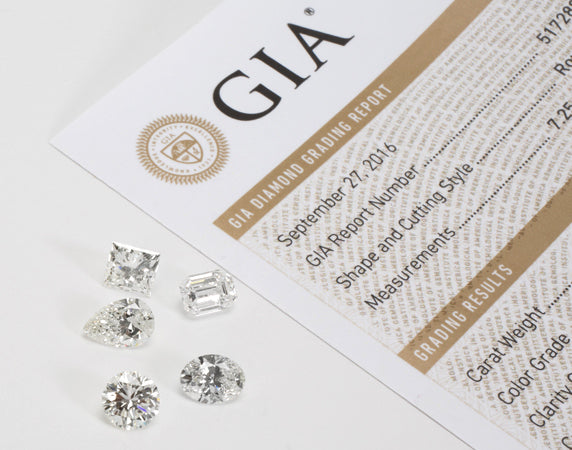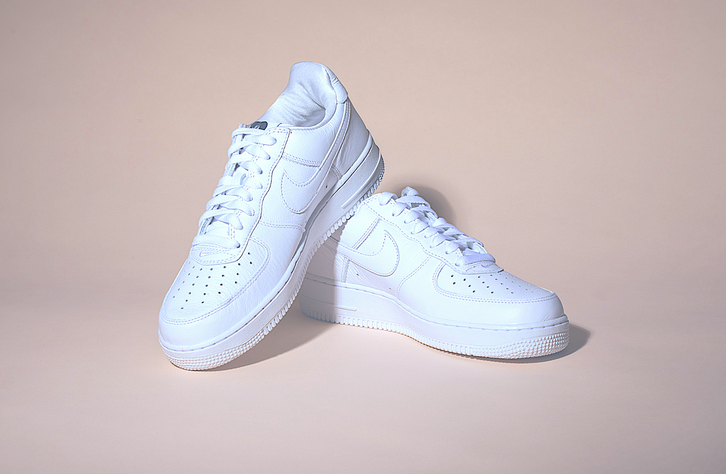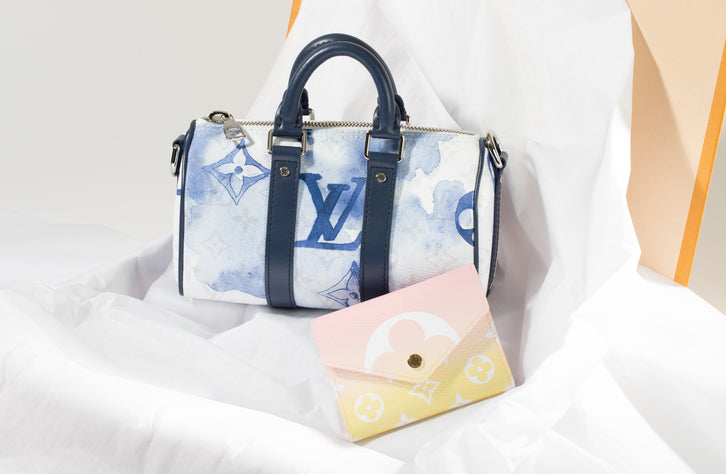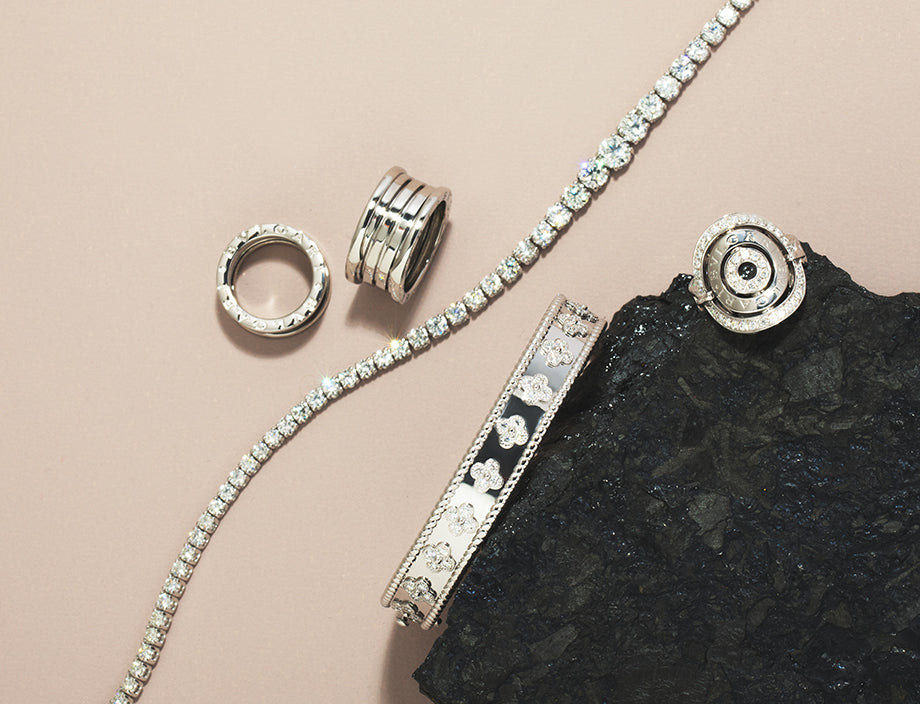Our gemologists have decided to answer some of the most common questions about diamond prices:
- How are diamonds prices calculated?
- How much is my diamond worth?
- Are diamonds investments?
- Where can I sell my diamond for the best price?

How Are Diamond Prices Calculated?
You may be looking for a clear cut diamond price chart, however diamond pricing is complex and nuanced. Market diamond prices fluctuate for different types of stones, and the quality of the stone is based on a myriad of factors.
Gemologists calculate diamond prices by determining the quality of the stone. They do this using the following diamond grading criteria:
- Carat weight: the weight of the stone measured in carats (ct).
- Cut grade: the proportions of the stone and therefore how well it reflects light.
- Color grade: the presence or lack of yellow/brown in the diamond.
- Clarity grade: the presence or lack of internal/external flaws.
- Polish: the quality of the surface condition of the diamond.
- Symmetry: an indication of how symmetrical the stone is.
- Fluorescence: whether the diamond emits a glow under ultra-violet light.
- Diamond shape: round, princess, heart, oval, cushion, pear, marquise, radiant etc.
To get your free, bespoke diamond price quote, simply click the button below and our experts will be in touch.

Listed below are the factors used to calculate diamond prices.
Carat Weight
Carat weight, often abbreviated to ct, is the standard unit of weight measurement for a diamond. You can expect larger stones to have a larger carat weight. The price-per-carat of a diamond increases as the weight increases. To find out the carat weight of your diamond, use our Diamond Weight Calculator.
There is always a compromise to be made when choosing a diamond: carat weight vs the quality of the stone.
Our recommendation: Stick to buying diamond just below the rounded up carat weight you had in mind. For example, if you were looking for a 1ct diamond, opt for a 0.90ct as this will be significantly cheaper. Diamond prices jump up in price when you move from 0.90ct or 1.90ct to 1ct or 2t.
Cut Grade
The parts of a diamond that affect the cut grade are as follows:
- Proportions: table, width, depth
- Symmetrical facets: girdle, pavilion, table, culet
- Polish: final treatment
- Brilliance: strong brightness & contrast
- Fire: distribution of colored light
- Scintillation: This refers to diamond sparkle. It strongly impacts a diamond’s appearance and sparkle, making it the most important of the 4 C’s.
| Cut Grade | |||||||
| Excellent | Maximum polish, symmetry, brilliance, fire, and scintillation | ||||||
| Very good | Much of the light is appropriately reflected | ||||||
| Good | Light is properly reflected but the fire and brilliance are not intense | ||||||
| Fair | Light escapes, and the fire and brilliance are quite dull | ||||||
| Poor | Diamond appears dull with the light escaping the stone | ||||||
A diamond with an Excellent cut grade significantly fetches more in the market than diamonds with a Poor cut grade. However, a diamond with a Poor cut grade can be re-cut to get a better cut grade, but this process sacrifices the carat weight.
Our recommendation: It is always best to choose a diamond with at least a Very Good cut grade.
Color Grade
For white diamonds, the absence of color makes it more valuable. Color grades range from D-Z: a D color diamond is colorless and a Z color diamond is tinted yellow or brown.
| Color Grade | ||||
| D-F | Colorless | |||
| G-J | Near Colorless | |||
| K-M | Faint (Slight visible tint) | |||
| N-R | Very light (More visible tint) | |||
| S-Z | Light (Noticeable yellow or brown tint) | |||
A diamond with a color grade closer to a D grade will have a greater value than a diamond leaning towards the Z end of the scale. Although a diamond may seem colorless, when inspected by a skilled gemologist, it may actually have a hint of yellow or brown that an untrained eye just cannot see.
Our recommendation: opt for a diamond with an H color grade or higher.
Clarity Grade
Diamond flaws are called inclusions, hence the clarity grade that ranges from Flawless (perfect inside-out) to Included (visible flaws to the naked eye).
| Clarity Grade | |||||||||
| FL | Flawless (No flaws externally and internally) | ||||||||
| IF | Internally Flawless (No flaws internally but some flaws externally) | ||||||||
| VVS1, VVS2 | Very, Very Slightly Included (Slight internal flaws) | ||||||||
| VS1, VS2 | Very Slightly Included (Slightly internal flaws but cannot be seen by the naked eye) | ||||||||
| SI1, SI2 | Slightly Included (Slight internal flaws that may be seen by the naked eye) | ||||||||
| I1, I2, I3 | Included (Flaws that are visible to the naked eye) | ||||||||
Some diamonds have blemishes that cannot be seen by the naked eye. However, when examined under a loupe by a trained gemologist, these imperfections may be easily pointed out. The more included the diamond, the less valuable it will be.
Our recommendation: If opting for an emerald cut diamond, prioritize a high clarity grade as their step cut emphasizes any inclusions.
Diamond Shape
As much as this is a matter of preference, the shape can also determine a diamond’s price. Some diamond shapes are more popular and in demand than others, this makes them more valuable.
Today, the most sought-after diamond shape is round cut followed by princess cut. After princess cut, it depends on what is in fashion, most recently oval cut and cushion cut diamonds have been in favor.
A list of diamond shapes:
- Asscher: similar to a square emerald shape
- Cushion: square or rectangle with rounded corners
- Emerald: cut with rectangular facets and with step cuts on the pavilion
- Heart: the shape of a love heart
- Marquise: almost looks like a small boat when worn on the finger
- Oval: quite similar to a round-shaped diamond, only longer
- Pear: shape of a teardrop
- Princess: square with pointed corners
- Radiant: a cross between the princess and the cushion shapes
- Round: the shape that reflects light the best

How Much Is My Diamond Worth?
It is important to understand that much like a car, diamonds depreciate in price once they are purchased.
When selling a diamond, you can typically expect to receive 20%-50% of what the diamond was bought for at retail. The reason being that jewelers have to mark up diamonds to cover their costs: staff, rent, insurance, inventory, marketing etc.

Are Diamonds Investments?
Simply put: no, or at least extremely rarely. Diamonds do not appreciate in value and as such are not investments. Only exceptionally valuable and rare diamonds can be considered investments.
These are often rare fancy colored diamonds such as red, pink, blue, purple or green diamonds. They are in low supply and high demand, this is what drives their price up.
Understanding the difference between diamond retail and resale price is important if you are looking to sell your diamond. These are two very different diamond prices, for the same stone.
- Diamond retail is the price you paid when the stone was purchased. This is a much higher price than resale value. It is essentially diamond market price plus the jeweler's markup.
- Diamond resale value is typically 20%-50% of retail value.

Where Can I Sell My Diamond For The Best Price?
Whether you want to sell engagement rings or loose diamonds, at myGemma we provide a fast, easy and safe service. As professional diamond buyers, our goal is to make the process of selling your luxury goods an enjoyable and stress-free one.
About myGemma
With an A+ rating from the Better Business Bureau and over 1,000 customer reviews, we pride ourselves on offering a professional, expert service. We pride ourselves on offering a reputable and transparent service with honest prices ranges and quick payment.
Established in 2012 in NYC, we have since grown to be a leading global luxury buyer. With offices in the US, UK, Hong Kong and Tokyo, we work with hundreds of customers around the world on a daily basis.
There are no fees or commissions deducted, our service is completely free of charge. The entire process can take as little as 24 hours from beginning to end. This is because we buy your pieces directly: no listing it on your behalf and waiting for it to sell.
A Modern Option For Selling Diamonds
We realized that consumers faced few, and generally inadequate, options when it came to selling their diamonds and diamond jewelry. While the experience of purchasing luxury goods is a high-end, enjoyable one, selling proved to be subpar.
From long wait times at infrequently held auctions, listing items on platforms with no guarantee of a sale, to unclear fees deducted from final offers. We wanted to change that by providing a streamlined, modern alternative for selling diamonds.
Our team of GIA trained gemologists have the necessary expertise to accurately and competitively price your diamonds. We specialize in purchasing diamonds, luxury jewelry, watches and handbags.
How It Works:
- Complete the online form to receive your price range
- Send your items with our free shipping and insurance or schedule an appointment
- Our experts will contact you with your final price
- Get paid or request your jewelry be returned free of charge









